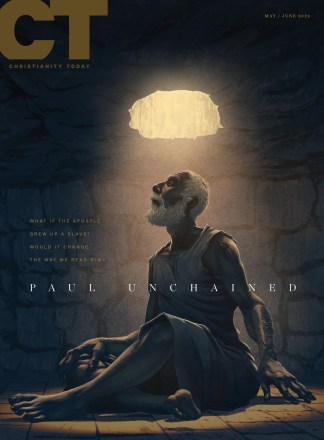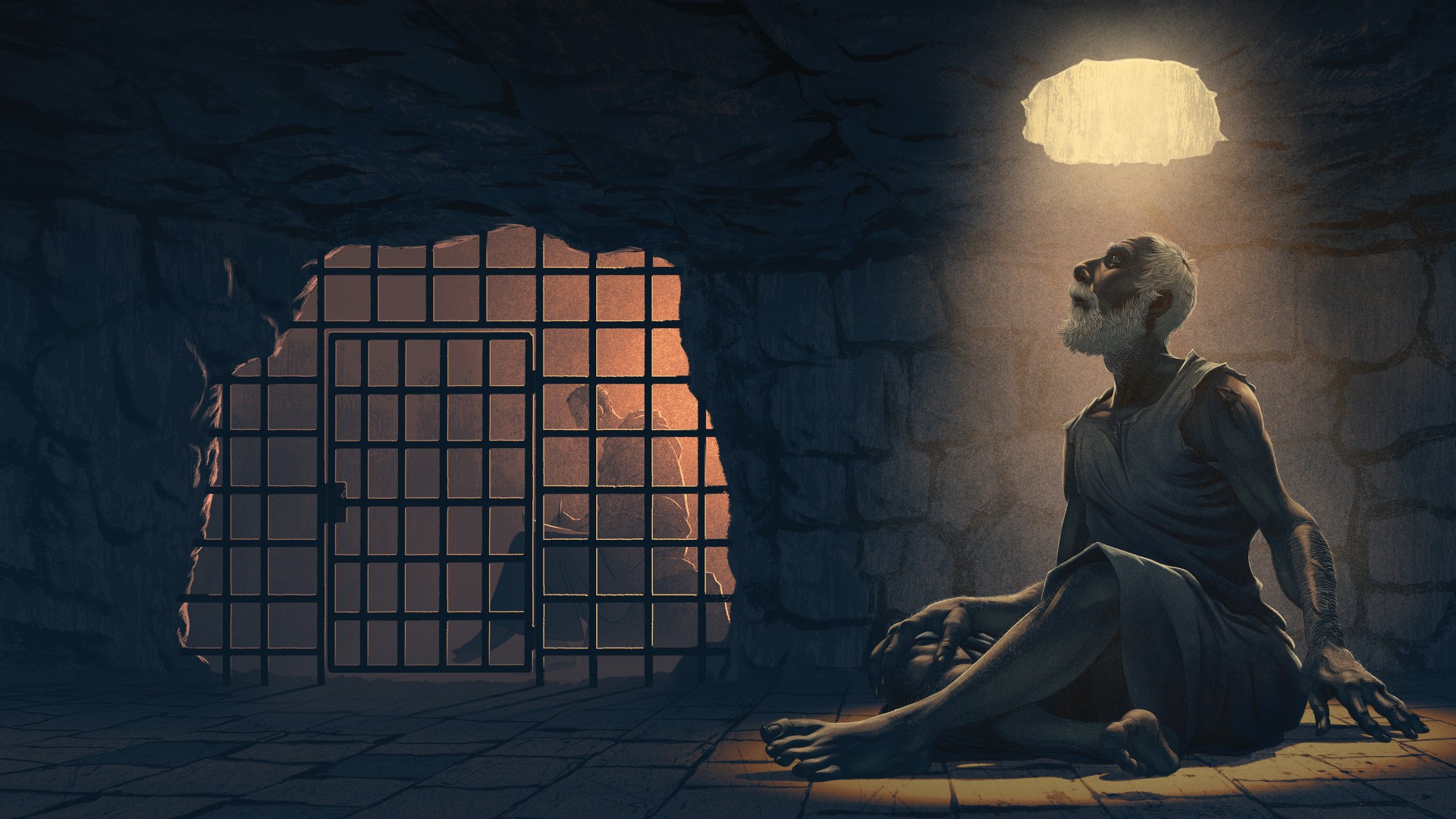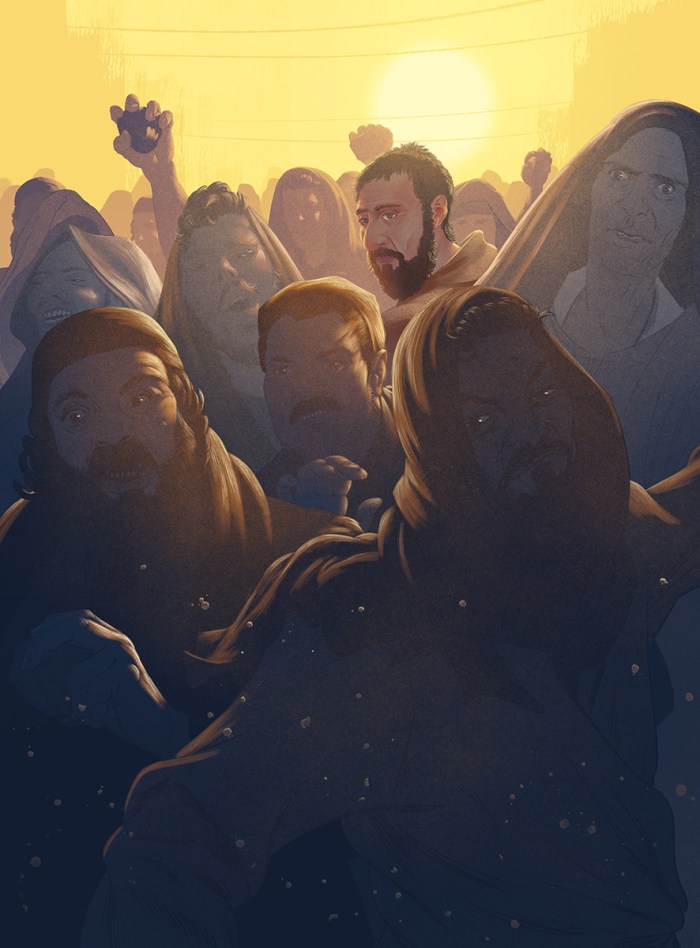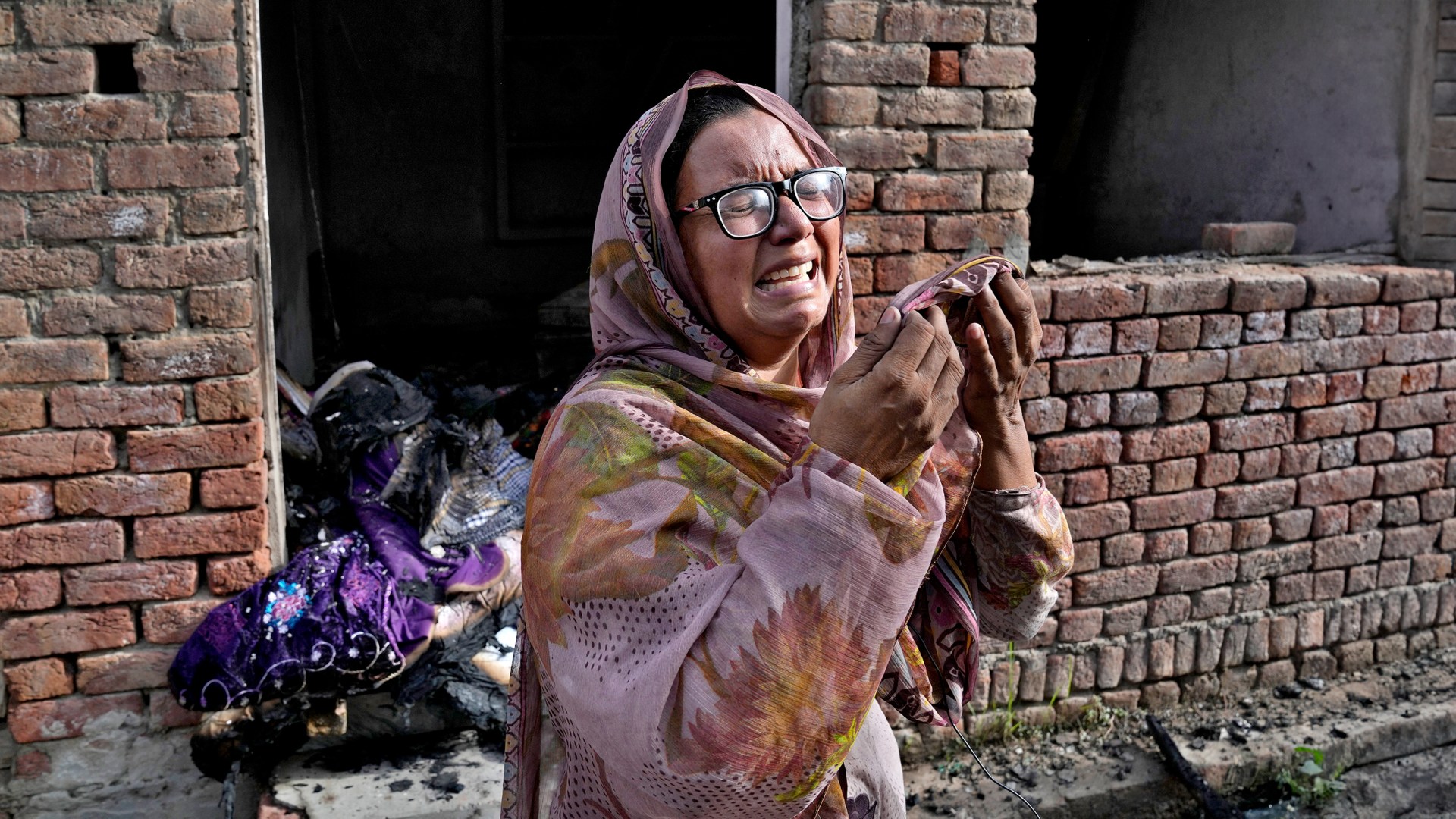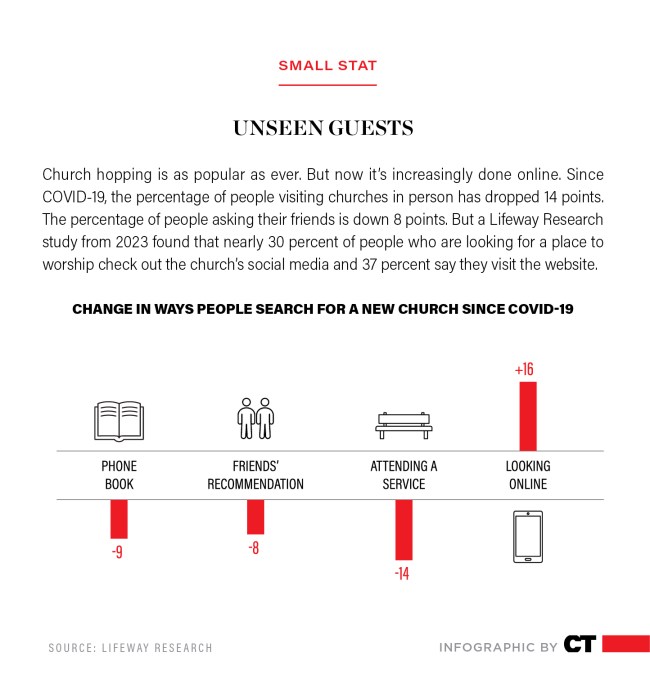I grew up believing that Earth Day was a liberal holiday. Climate change was a lie, a ploy by leftist political activists to dismantle US economic superiority by undermining domestic energy production and crippling our industries. Humans had a God-given right to have “dominion” (Gen. 1:26) over the earth, I was taught. The natural world was ours to “steward” (Gen. 2:15), which to us meant it could be used as desired to improve the lives of industrious, hard-working families like ours.
Everywhere I turned, I saw this definition of stewardship in action. It was well-intended but, I now think, ill-considered. My home then was the Texas Panhandle, atop the Ogallala Aquifer. The Ogallala is the largest aquifer in the nation, but after decades of High Plains farmers tapping it with abandon, it’s drying up.
These days, I live five hours south of my hometown atop another major geological formation: the Permian Basin, the nation’s most productive oil field and the heart of the US oil and gas industry. Thirteen years ago, I cried when we moved to Midland, Texas, for my husband’s new job with a natural gas company, not wanting my family to be part of an industry I’d come to believe was destroying the earth. Needless to say, by then, I no longer believed climate change was a lie.
I’d spent nearly four years in a small village outside of Beijing where the drainage creek bubbled with dangerously toxic sludge; we’d go days without seeing the sun through the industrial haze; and blowing my nose in the winter would leave me with a tissue blackened with coal dust. I didn’t have to be a climate scientist to conclude that there would be consequences for how humans were treating the earth.
As my views changed in my late 20s, I found a new—yet still evangelical—vocabulary for talking about the planet. Like many other thoughtful Christians eager to disassociate from a history of climate change denial, I traded one extreme for another. Dropping the free-for-all model of stewardship, I instead began espousing an apparently sensible but functionally vague idea that Christians should care for creation.
But in those 13 years, living amid the fossil fuel industry and grappling with the complexities of energy production has changed my perspective again—and this time, not to another extreme. I’ve learned so much from sober-minded industry experts here in Midland, many of whom are faithful Christians. They’ve brought depth and nuance to my thinking about science, creation, and orthodoxy, and they’ve helped me hold in tension the beliefs that climate change is real and that an abrupt transition to green energy would be enormously harmful for vulnerable people here in the US and across the developing world.
For Christians who believe God desires for us to care for his creation and his people, there’s ground between “climate change is fake” and “the earth is on fire,” and we can help lead the way to a more reasonable conversation about energy production and consumption.
It’s easy to see how the conversation got so unreasonable. We’ve traded pragmatic thinking for impassioned rhetoric, mixing apocalypticism and accusations at every turn. Many have come to believe we’re on the verge of catastrophic environmental tipping points, a premise that makes any opposition seem intolerable and any response but sheer panic feel irresponsible.
Climate anxiety has risen to the point that some people are deciding to remain childless or, in a few cases, calling for the “graceful bowing out of humanity.” This is a shockingly anti-human, voluntary extinction movement that, while fringe, has profoundly consequential ideas.
Even more mainstream voices tend to take an absolutist tone. “The science is clear,” the United Nations says: “To avoid the worst impacts of climate change, emissions need to be reduced by almost half by 2030 and reach net-zero by 2050. To achieve this, we need to end our reliance on fossil fuels and invest in alternative sources of energy that are clean, accessible, affordable, sustainable, and reliable.”
The problem is, that kind of drastic solution is not as simple as it sounds. Right now, 60 percent of US electricity is generated by fossil fuels (including the energy charging many electric cars), and 18.6 percent comes from nuclear plants. Our primary alternative electricity sources—like wind and solar—contribute about 21.4 percent of our power, but they’re much less reliable. US emissions won’t be halved in six years unless we have a catastrophic plunge in quality of life.
We also face crippling storage and transmission problems that cannot be wished away. Per Evergreen Action, a climate activism group, over 80 percent of clean energy projects in the US may never be completed. That’s because we don’t have enough transmission lines in our electric grid to move the power they’d generate from production areas to consumers.
At least with transmission, we know the solution, even if we may not be able to implement it quickly enough. Storage is another problem entirely: Though development work is underway, we do not yet have scalable battery solutions that can help make renewables a reliable alternative to fossil fuels. We can collect solar power, but we need enormous battery capacity to even out its distribution across distance as well as seasons and weather patterns.
And on top of all this, our need for energy is only increasing. AI’s appetite for electricity is voracious—utility companies already can’t keep up.
Besides these technical problems there’s a more human concern. “One of the great mistakes is to judge policies and programs by their intentions rather than their results,” the economist Milton Friedman once said, and the real-world risks of an energy policy revolution are serious. Quick transitions like those demanded by the UN demonstrably drive up prices, destabilize geopolitics, and create shortages that hurt the vulnerable more than the prosperous, who can afford to absorb higher costs in service to green ideals.
This is most apparent in the developing world, where, just as here, parents want their kids to learn how to use computers and doctors want hospitals to be able to run ventilators—all of which require electricity. “When looking at underlying indicators of economic poverty, lack of access to energy looms large,” said Scott Tinker, a University of Texas geologist, in a recent article. “The wealthiest nations in the world enjoy the greatest energy security—affordable, available and reliable—and the poorest nations are essentially energy starved.”
Demanding that developing nations go net-zero by 2050 is not only implausible but inequitable and unfair. And that’s not the only way the developed world’s green arrogance hurts the global poor. In her May 2024 cover story for The Atlantic, writer Stephanie McCrummen reports that the Maasai people in Tanzania have been forced off their land in the name of offsetting pollution. “In the past two decades,” she writes, “more than a quarter million Indigenous people have been evicted to make way for ecotourism, carbon-offset schemes, and other activities that fall under the banner of conservation. That figure is expected to soar.”
By moving the manufacturing of cheap consumer goods to countries with lax environmental laws, developed countries export our pollution (and our trash) and camouflage our insatiable appetites with elaborate carbon credit schemes. Then we demand that the global poor economize and clean up their comparatively minimal energy use. We want the speck in their eyes gone by 2050 but have no real intention of addressing the log in our own.
An abrupt energy transition would do domestic damage too. California, which pursues green energy initiatives with gusto, is a good case study here. The state’s energy policies have consumers “paying to model good climate behavior,” in the words of commentator Susan Shelley. The price for a kilowatt hour of residential electricity in California is double that of Texas, and high cost of living is a major reason many Californians are moving out of the state.
It’s even possible for a premature transition to green energy to increase pollution. Germany committed to phasing out nuclear energy to pursue even greener renewables, but when Russia cut off gas exports after invading Ukraine, Germany had to turn back to coal, a far dirtier fuel than nuclear or even natural gas.
And while there are environmental abuses in domestic energy production—chronic flaring, unchecked methane emissions, orphan wells, produced water disposal problems, and more—shutting down US producers, whether directly or by regulating them out of business, will make things worse. Though in need of further reform, domestic energy production is already cleaner than production in much of the rest of the world. It’s better for the environment to drill domestically than to import dirty oil from countries with laxer standards.
For Christians like me—who aren’t policymakers, corporate leaders, scientists, or activists—the global scale of energy policy and climate change is daunting. But if we can disentangle ourselves from both climate change denial and climate “doomerism,” we could understand that our stewardship of the earth is not a carte blanche but a responsibility to God and neighbor. We could be well-positioned to pursue practical, feasible solutions to the world’s energy crisis.
“As I see it, most people’s interaction with God’s created world falls into one of three categories,” said Midland’s mayor, Lori Blong, who owns a privately held oil and gas company with her husband. People think the “earth is something to be served by humanity for the good of nature; or the earth is something to be subjugated and consumed by humanity in shortsighted greed; or the earth is something to be stewarded for the good of humanity and the glory of God.”
“Bible-believing Christians ought not serve creation nor consume creation,” Blong told me. “We must steward it prudently.”
Stewarding in this sense means working to develop cleaner energy alternatives while also understanding the realities of physics and thermodynamics and supply and demand. Abilene Christian University’s work to develop nuclear energy, which is partly funded by Christian donors with roots in the oil and gas industry, is a great example of the innovation that can happen when pragmatic energy experts, motivated by a sense of God-given calling, explore the future of energy development in hopeful, judicious ways.
It also means we ought to explore less technologically splashy but perhaps more impactful ways to mitigate harm. For example, planting trees or developing seagrass fields are both cost-effective ways to capture carbon, but they don’t look as cool in a headline as expensive carbon capture plants or redirecting the sun’s rays. Or consider that 40 percent of energy consumption in the US is tied to heating and cooling buildings; improving insulation is a straightforward way to lower that use which doesn’t require new technology.
Perhaps the most significant thing we can do on an individual level is simply curb our own consumption, living more simply by buying less, using less, disposing less. Jesus warned us to “guard against all kinds of greed; life does not consist in an abundance of possessions” (Luke 12:15). Christian thinkers like Wendell Berry or Paul Kingsnorth articulate challenging and countercultural ideas here that don’t look like merely railing against the fossil fuel industry or smearing tomato soup on Van Gogh paintings.
There may be no better place to root ourselves than in 2 Timothy 1:7: “For God has not given us a spirit of fear, but of power and of love and of a sound mind” (NKJV). The dominant climate conversation is full of fear—fear of conspiracies to hurt the American economy as much as fear that human behavior has irrevocably ruined the world.
Both expressions of this “spirit of fear” are far from the truth. Climate change deniers unreasonably act as if fossil fuels are an unlimited resource that can be consumed without consequence, dismissing evidence to the contrary as “liberal,” but doomer fears are leading our leaders to shortsighted, panicky decisions. Taken far enough, these policies will foster energy scarcity, increase global reliance on dirtier energy sources, and destabilize us all with more war, famine, poverty, and human suffering. In the midst of such a frenetic storm, Christians must be a source of peace, reason, and even hope.
Carrie McKean is a West Texas–based writer whose work has appeared in The New York Times, The Atlantic, and Texas Monthly magazine. Find her at carriemckean.com.











